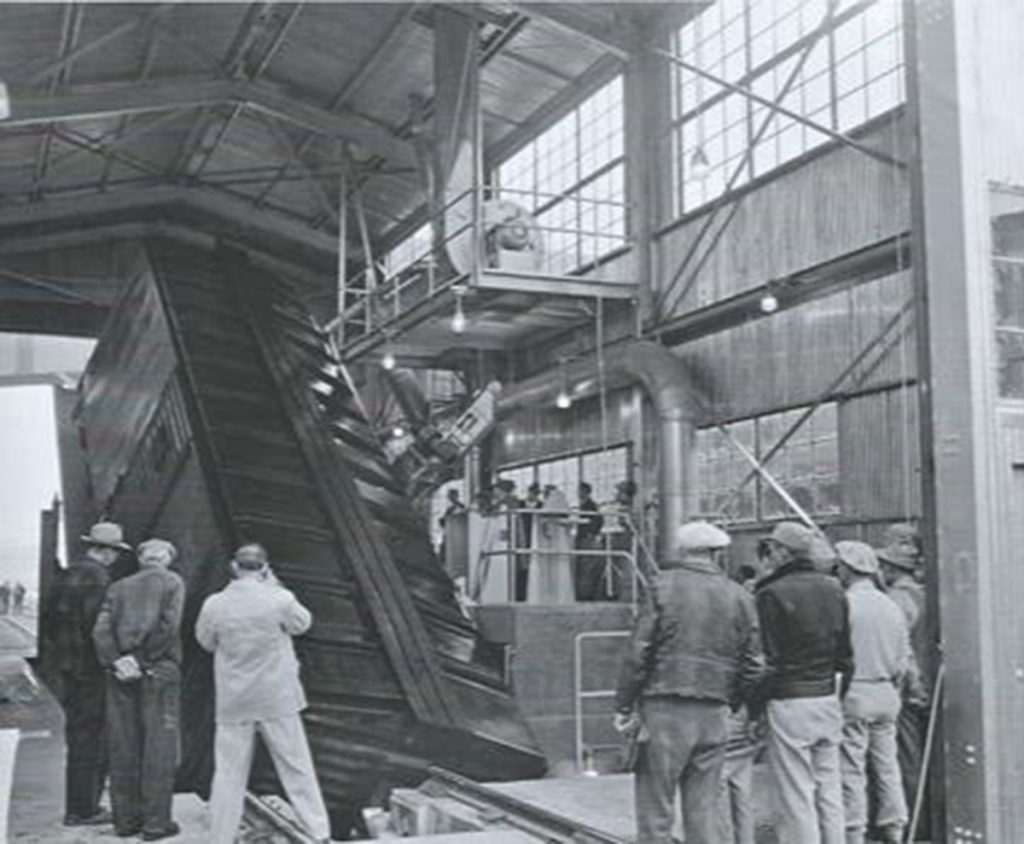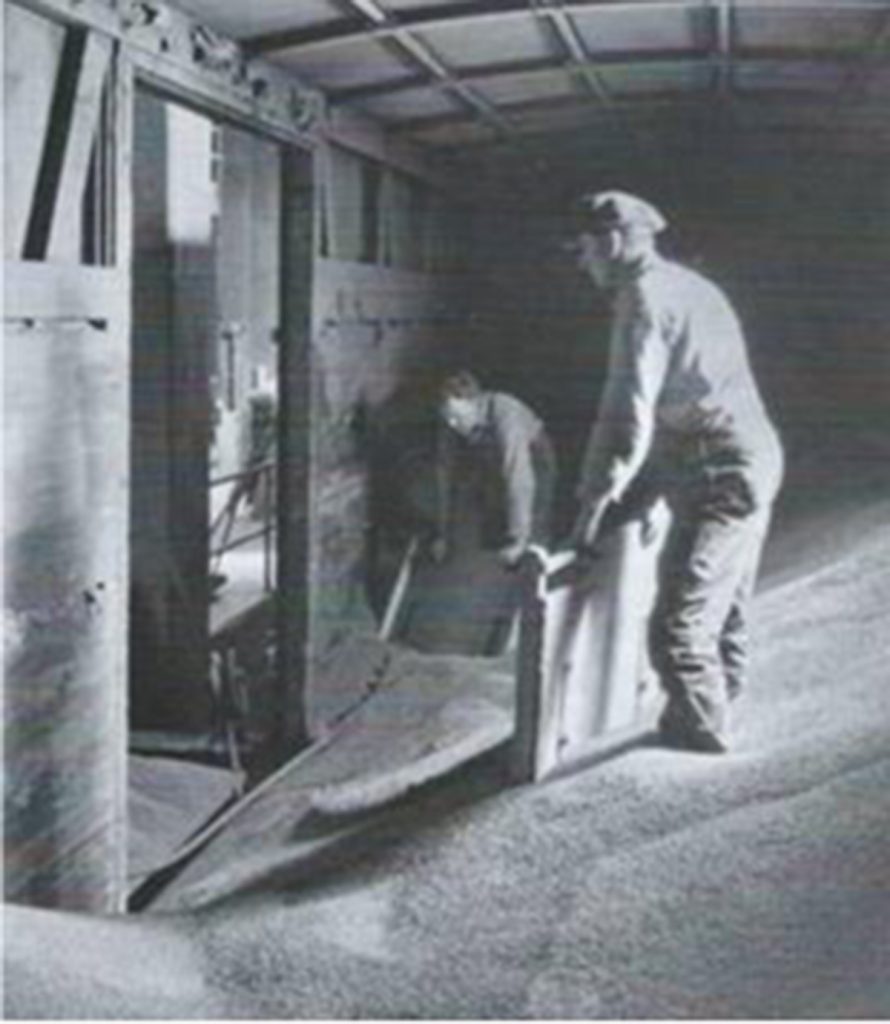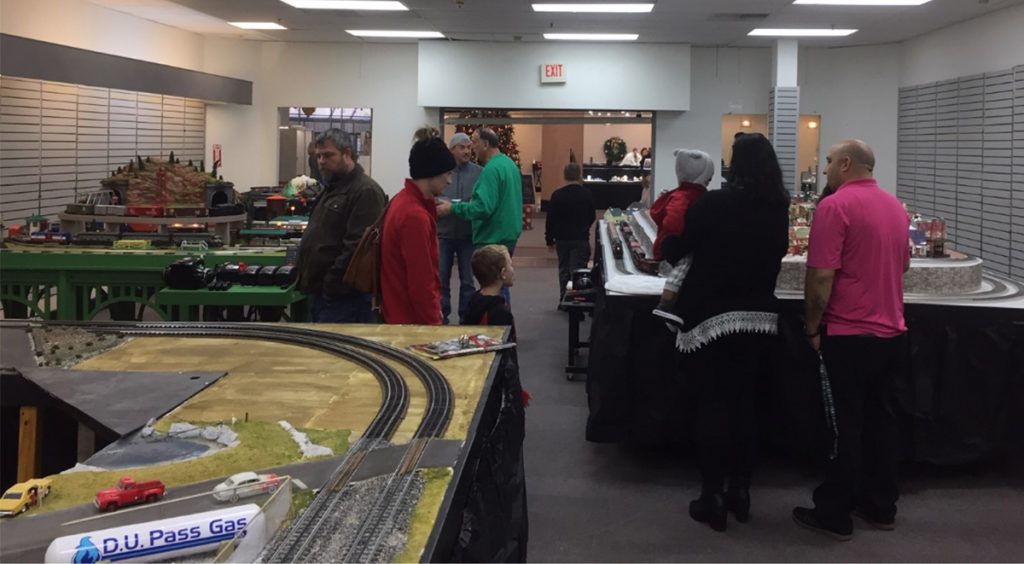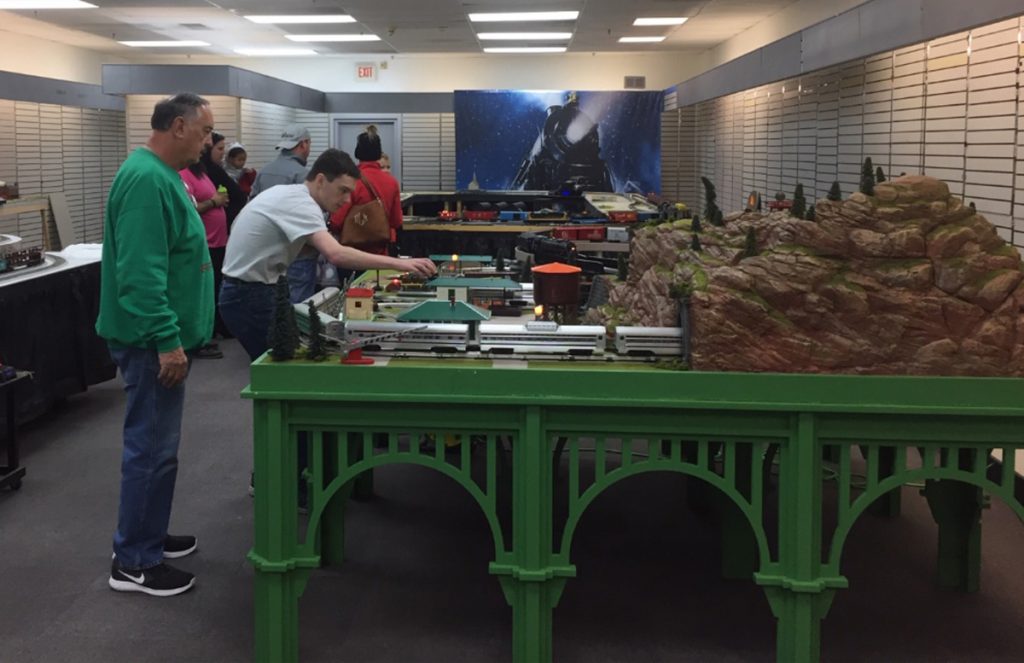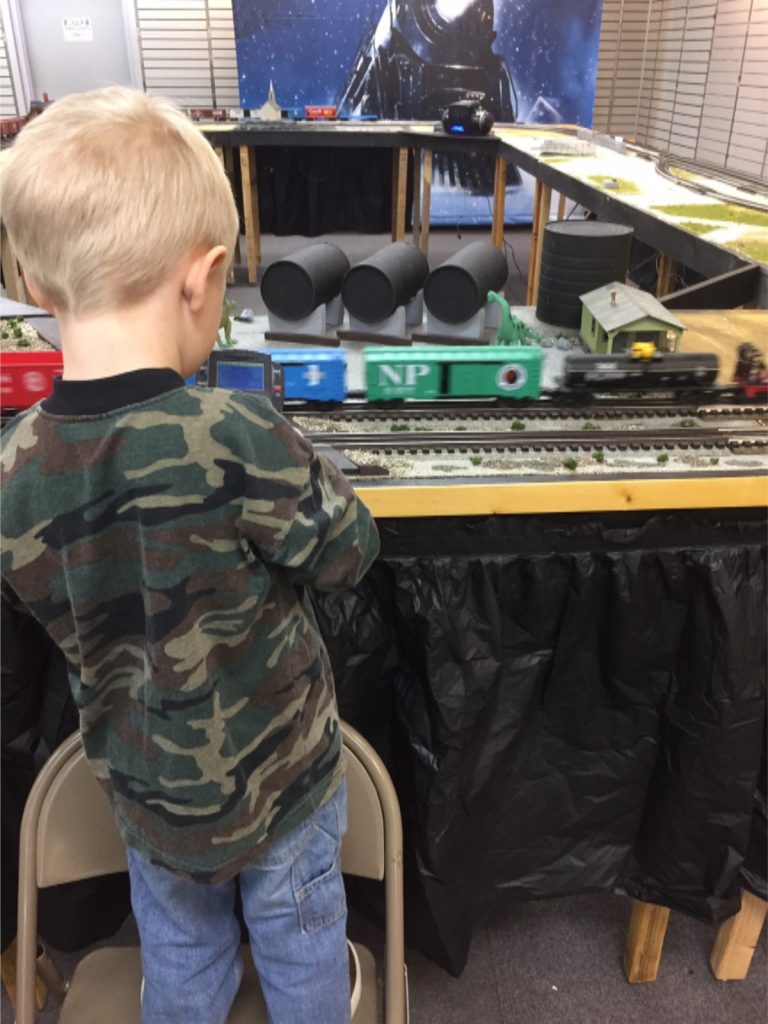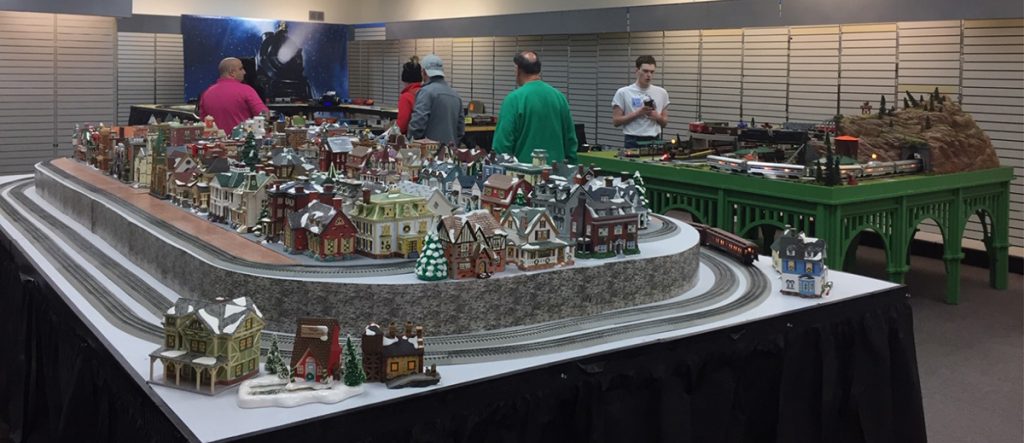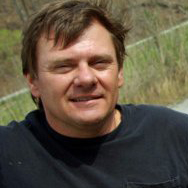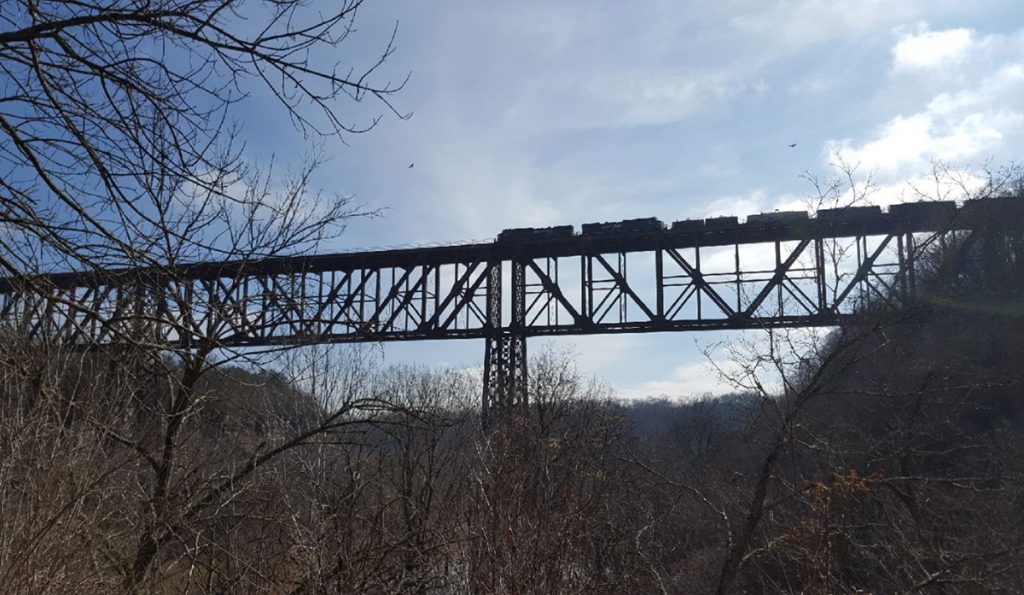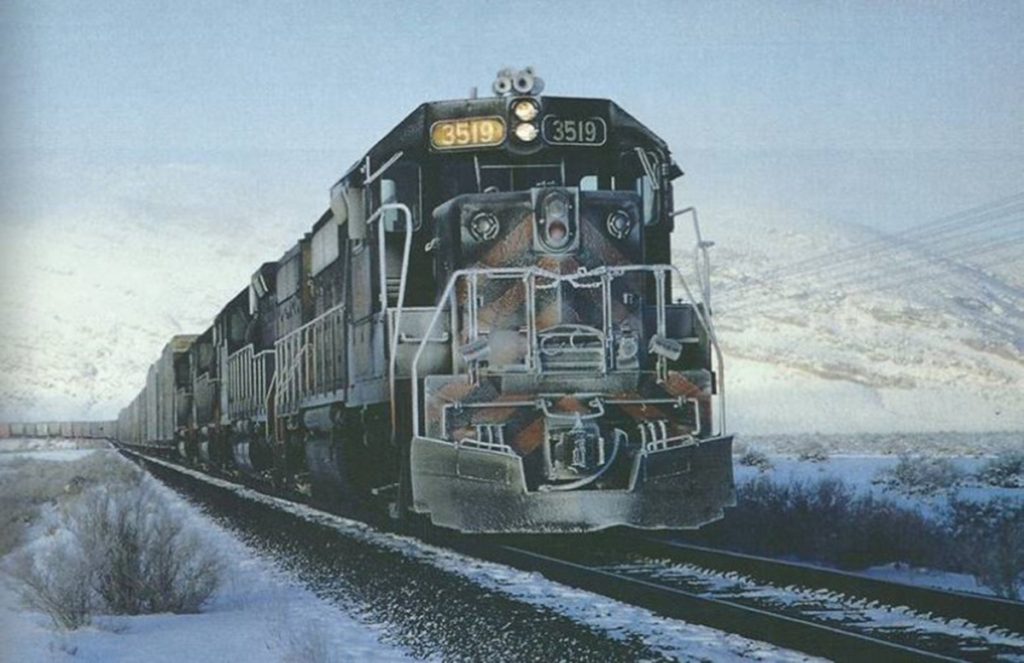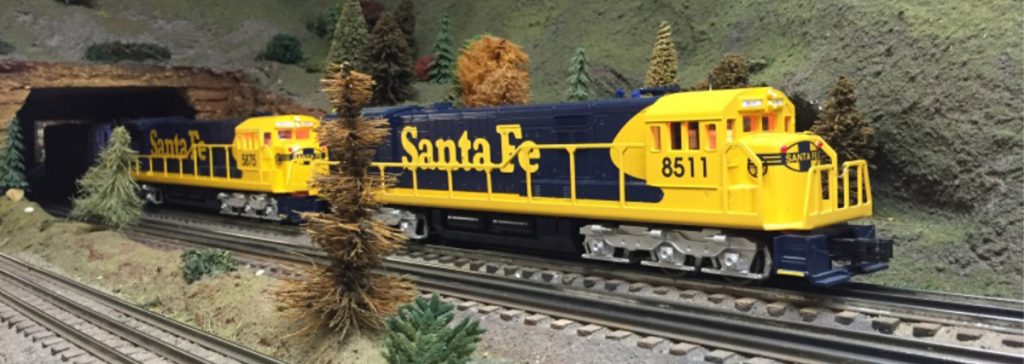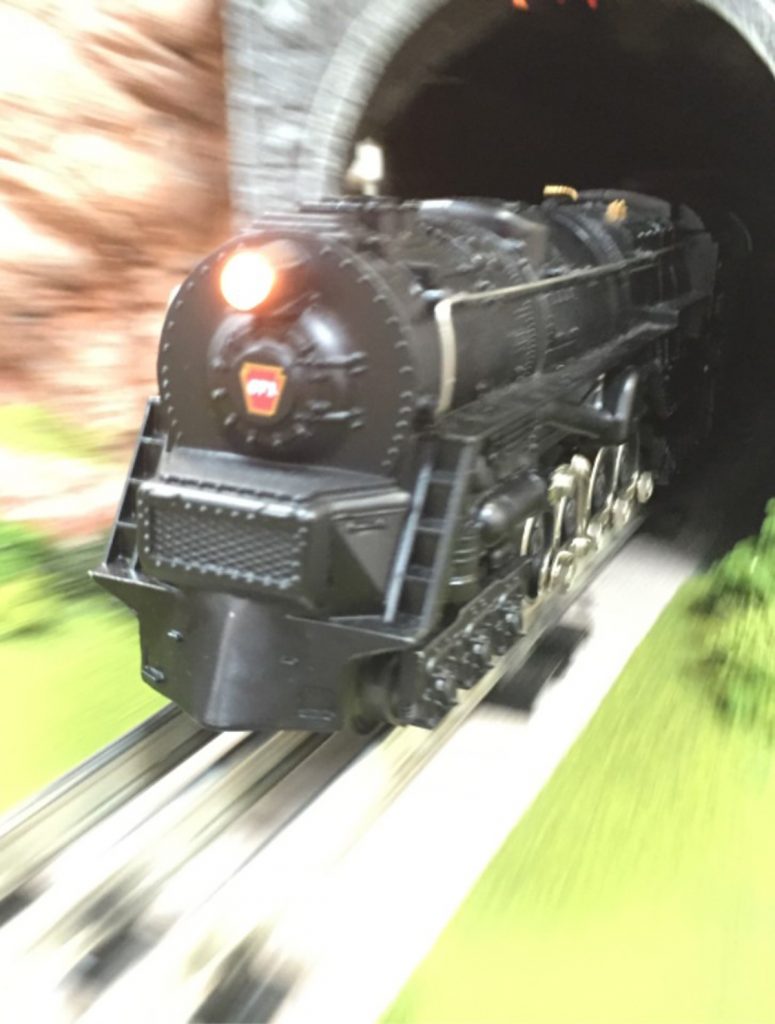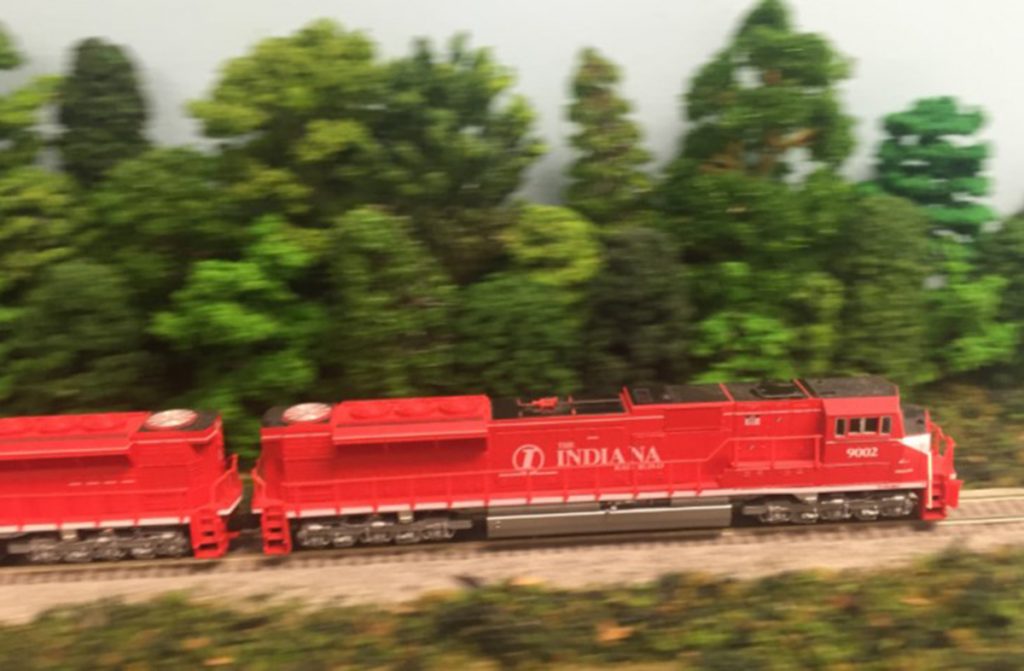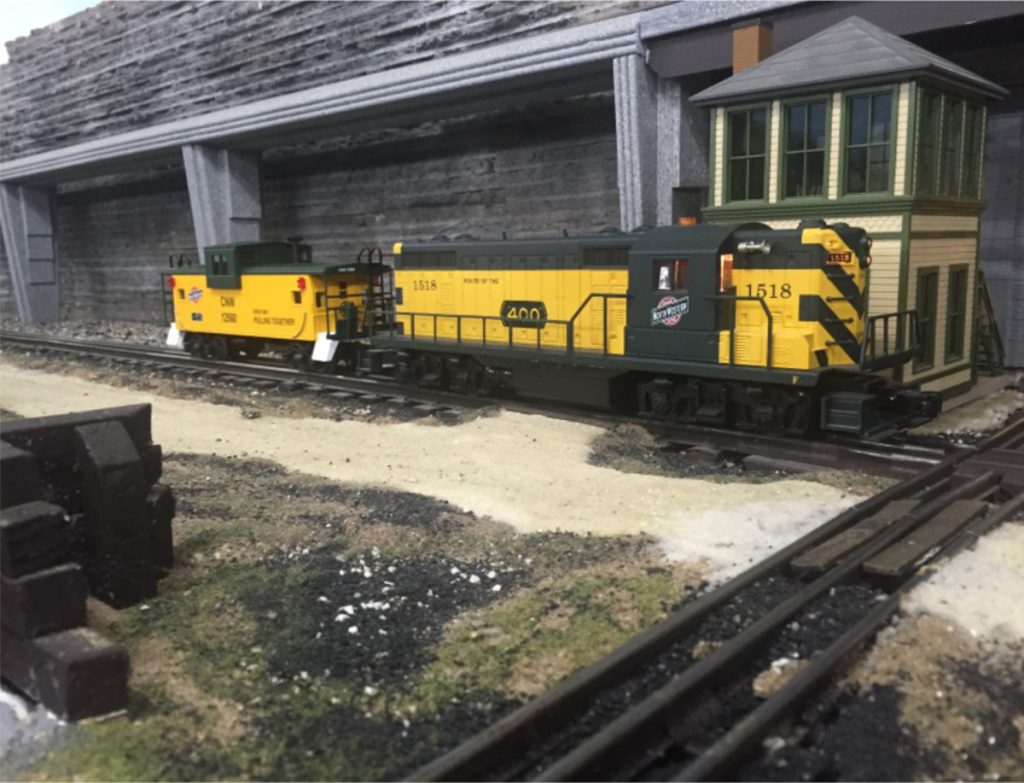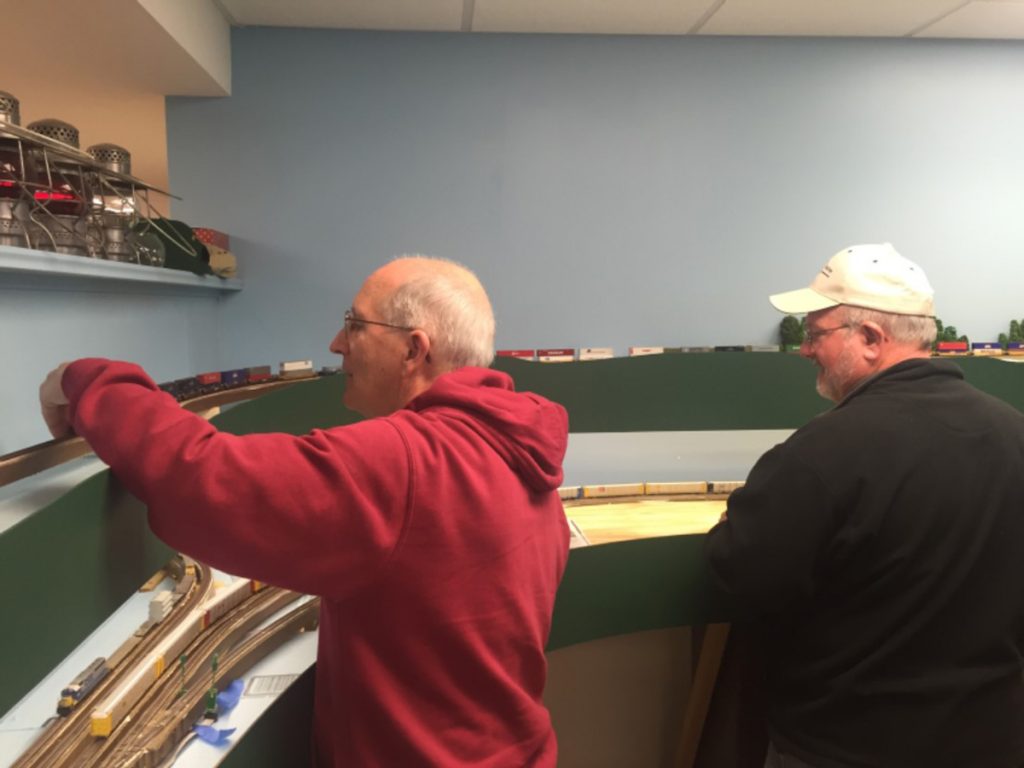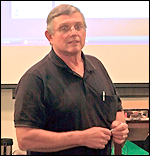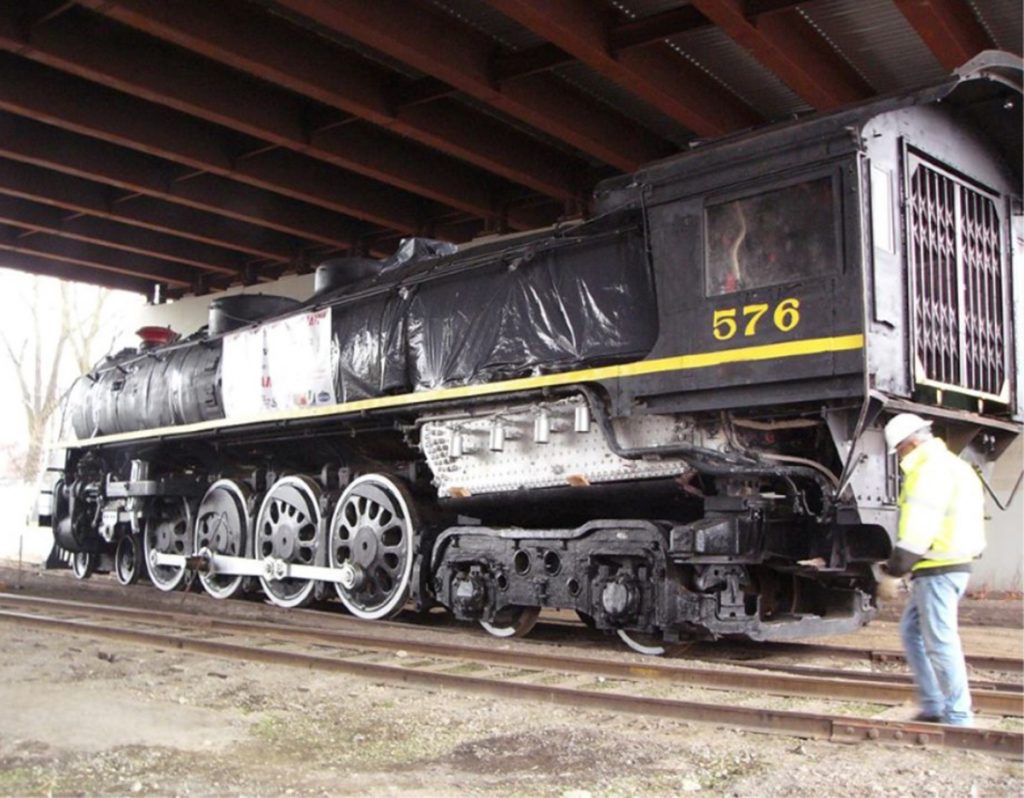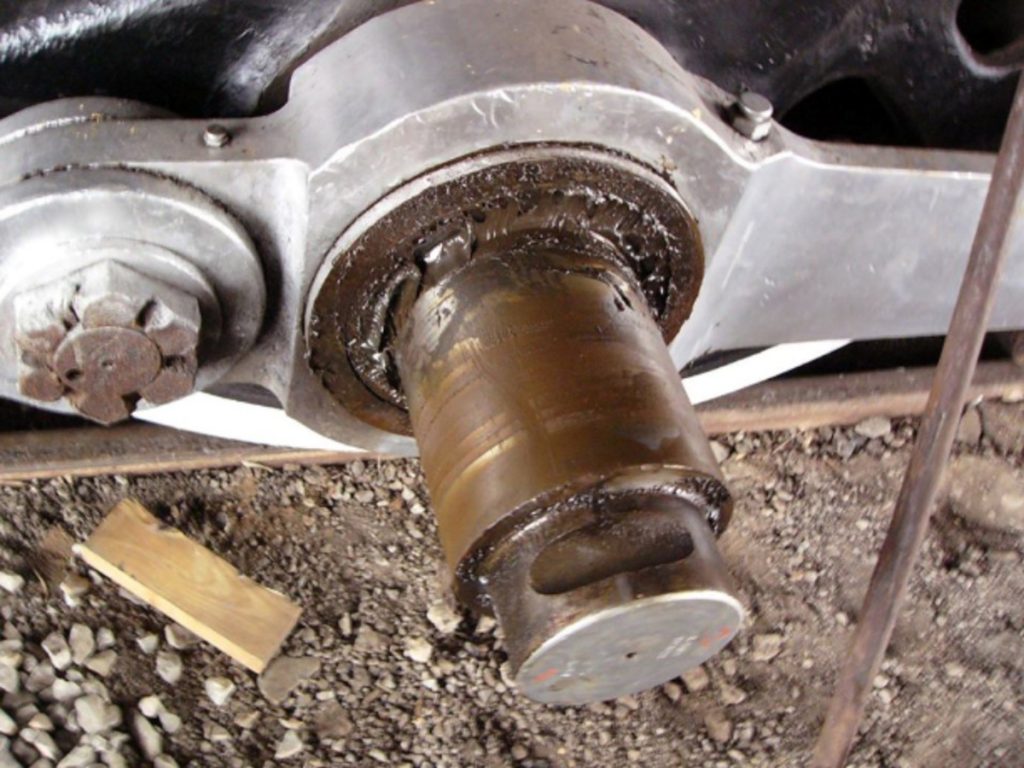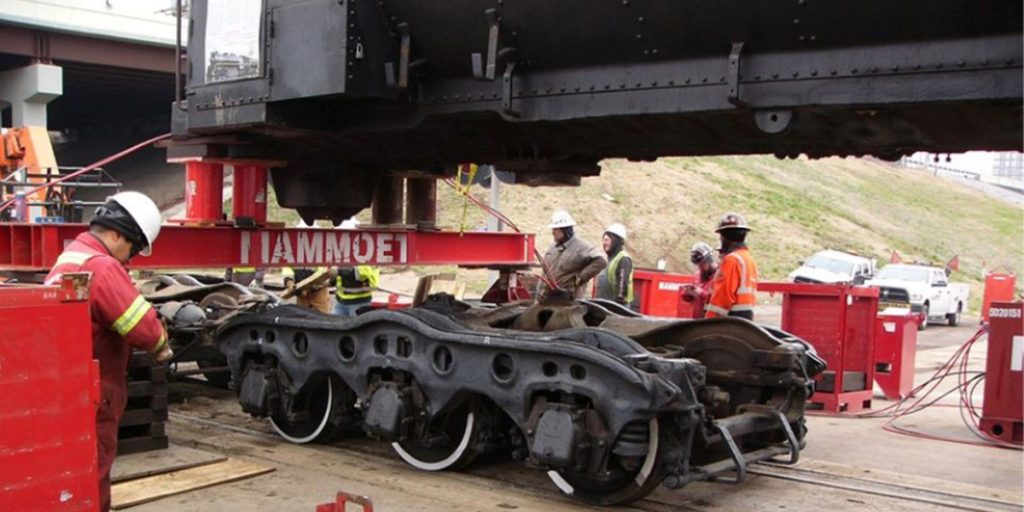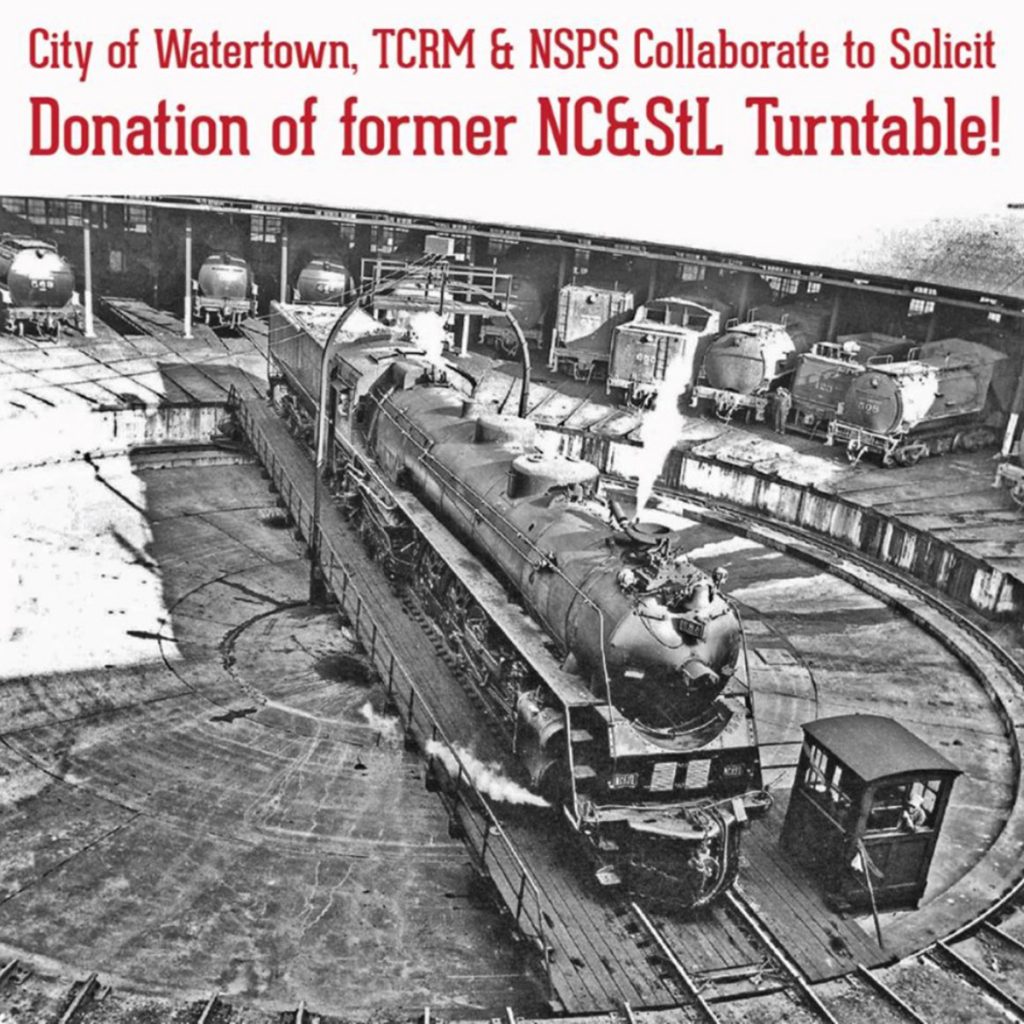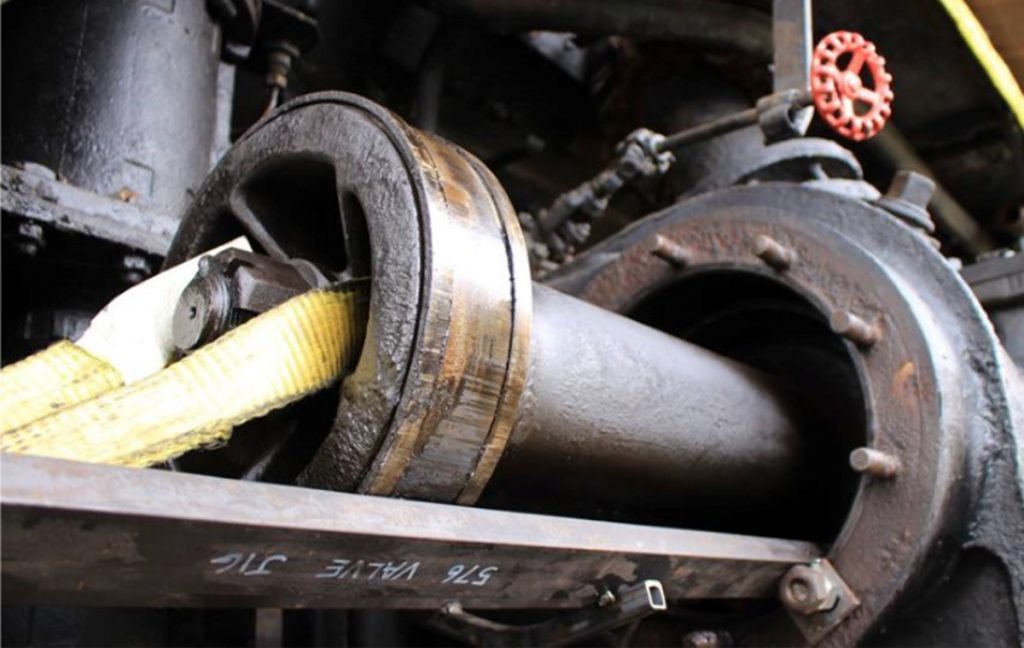Before we got used to the jumbo covered hopper cars so prevalent now, grain was shipped in a common 40’ boxcar. In the early days grain was shipped by the sack. Bulk grain shipment by rail required the use of a temporary grain door secured inside the doorway. In the picture to the left, the wooden door has been removed and the men are manually shoving product out the door.
In the other picture, a loaded boxcar is being mechanically tilted and tipped to completely off-loading the product. The car was secured firmly, then raised to about a 45-degree slope, and tipped side-to-side. The car is lowered and the process is repeated as the other end is lifted. This time the car will be tilted before it is raised in hopes of the product not refilling the far end of the car. The whole process was fairly swift, as I recall watching at the Port-of-Tacoma back in the 50s, probably five minutes total. With all those fancy dressers observing behind the protective glass, , and there are no other cars lined up, this appears to be a demo.
Back at the grain elevator before loading, the grain door was secured and heavy paper lining was applied generously to all surfaces. When loading is complete, the regular sliding steel door could scoot past the temporary grain door and be secured. More than one loaded grain car arrived nearly empty, days later after bumping along over the clickety-clack. Such happenstance kept railroad claims adjusters busy. Even one tiny break in the paper, in the wrong place, with tons of pressure, for a week or more, could wreak havoc. Pigeons and others loved it.
Grain doors only went a little more than halfway up the boxcar door opening, varying some due to the weight and density of the product. Corn, soy beans, and rice received the same treatment.
Reportedly, the very last grain-filled boxcars left the elevators in western Oklahoma in the Spring of 1978. The Missouri-Kansas-Texas Railroad, better known as the “KATY” did the honors. Why was it called KATY, you ask? Because the KATY’s New York Stock Exchange ticker-tape symbol was “KT”.
Credits: photos from the Oregon Historical Society, as seen in the Union Pacific Railroad Historical Society’s Streamliner Fall 2011 issue.
Submitted by Gary Ostlund

